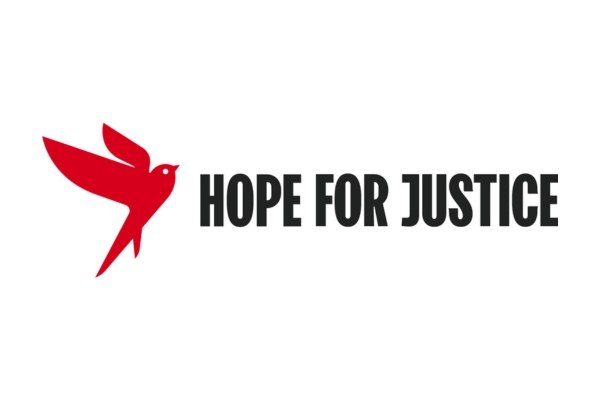Insights
INSIGHTS
All Topics
How to reach more supporters online
05 May 2022by Laura Stanley
We show charities how they can grow their online presence, with tips and inspiration from organizations who have already perfected the art
The online world can be a loud and overwhelming place. With lots of different platforms, content, and people all vying for attention, it can be hard for charities to cut through the noise.
The good news is it is possible with only a few pointers. With the right tools at their disposal and the expansive reach of the internet, even the smallest charity can have a big voice.
Any organization can reach anyone interested in their cause from anywhere, regardless of geographical location or time zone. They only need to be online.
Whether it’s creating an exciting yet navigable website or making the most of what search engines can offer, there are lots of tricks to improve your online visibility, increase the number of people who are aware of your cause, and ultimately maximize your impact.
In this article, we will outline three of the most helpful tips to get you started.
Build a good website
An organization’s website is fundamental to its online presence. A good charity website is all about making life easier for supporters, donors, and beneficiaries when they visit. It can raise awareness of a cause and improve the way that a charity’s services are delivered online. It should be easy to navigate, accessible, and showcase the work of the charity to everyone who wants to know more.
An effective website can also drive donations and build trust between the organization and its supporters. For example, when people donate through a charity’s website it’s the charity that can control how that’s done and what happens next between the charity and the donor. This is particularly true about the method and frequency of subsequent communications.
It is much harder to control the process when donations come through third parties, including social media platforms. The Enthuse Donor Pulse Report clearly showed donors were more likely to remember the cause they donated to if they did so directly through the charity’s website, warning of a ‘Give and Forget’ trend when using third party platforms.
When creating or improving their website, charities should think first about what their audience wants to know and consider how to make their journey through the site as easy as possible. This could include putting important statistics on the home page such as showing donors how many people they support and how many services they deliver.
Similarly, making the donate button large and visible can help steward potential supporters directly to where they want to go with ease.
A good example of this is the website for Scope, a UK-based disability charity. At the top of the page, there are three clear links to the charity’s most important pages: their donate page, their online shop, and where their beneficiaries can find advice and support.
Like Scope, charities should think about their audiences and their most likely journeys through their website. Take them from A to B in as few steps as possible and receive increased loyalty and support in return.
Diversify your content and find the right channels
Charities don’t need to be the most well-known or popular, or have the biggest funding, to be big online. With a combination of the right content and the right channels, organizations can reach more people who care about their cause much more easily.
Creating engaging and informative content is a particularly effective way of establishing your web presence. That can be with articles, videos, blog posts, or podcasts—or a combination of all four.
Creating a wealth of content in multiple formats is a great way to cater to your audience in whichever way they want to engage with you. For some, that still means reading written articles or blog posts. For others, it could be watching short videos or listening to a podcast to better understand the information you’re trying to relay.
The most efficient way to maximize the reach of your content is to tailor your messaging so that it reaches your target audiences and provides them with valuable information they can use.
If you have an older audience, TikToks or Instagram Reels may not be the most effective way of talking to them. However, in the interests of growing your audience, those formats would work better with younger audience members.
The tone of your content on each channel will be key to think about, too. Irreverent content, however informative, is unlikely to work as well on professional platforms like LinkedIn as it would on more informal sites like Instagram.
Charities can also find more inspiration on how to choose the right channels from the .ORG Learning Center’s handy social media guide here.
Youth Music, a charity which helps young people in challenging circumstances participate in music projects, is a great example of how an organization can create fresh content and deliver it with the right channels.
Supporters and beneficiaries can find lots of informative articles about what the charity does on its site, with news pieces and listicles (content that takes the form of a list, such as those commonly found on Buzzfeed) sitting alongside longer feature articles. A banner of social media links directly beside the charity’s logo shows visitors where else the organization can be found, including on YouTube, Tiktok, and Facebook.
Even among all that content, the all-important donate button is still highlighted to remind everyone that the site they are visiting belongs to a charity and to show them how they can help.
Get on board with SEO
SEO, or search engine optimisation, is all about being visible at the exact moment someone is searching for something related to your cause.
For example, if someone is looking for information about digital inclusion, good SEO practices will help ensure that your organization’s relevant article on that topic appears near the top of the search engine results. It is a good way to boost brand recognition and awareness, but it can feel daunting to newcomers. Fortunately, there are a few hard and fast rules out there that can help.
Most importantly, pick the right keywords relevant to your cause. Think beyond the obvious keywords, which may have more competition from other organizations, and home in on what your audience is really searching for.
Think about it as though you are answering the questions your supporters are asking; include the keywords they are searching for in your title and content, and let the search engines do the rest.
There are tools, such as Answer The Public, that can offer charities detailed keyword reports, including how the public has used them in searches. Try testing them yourself: look up your keywords and compare them with the list of related searches to see what people are looking for and the various keyword phrases they are using. You’ll be able to quickly see if there are any you should be including in your overall SEO strategy.
There are other ways to help search engines link to your site, most of them related to how credible your site looks. When linking to other websites and organizations, ensure they are reputable (think the BBC or The Guardian, rather than FakeNews.domain), and add good quality images to your content where possible.
Adding alternative text to your images (descriptions of what the images contain) not only makes your site more accessible for people using screen readers, but can help search engines find your content better if you include your keywords there as well. It’s a win-win.
You might also want to think about backlinks – these are links from other sites to your page. The more people link to your page, the more search engines view you as reputable. Try to make your content as valuable, and as visible, as possible to people and organisations, so they want to link others to it.
Charities also might want to look at Google Ad Grants. Google Ad Grants provide eligible charity and non-profit organizations with up to £90,000 of free advertising per year, ensuring that a charity’s site appears at the top of the results in Google searches related to their mission.
Google Ad Grants are an effective way to boost a charity’s visibility at no extra cost to themselves—though it is worth noting that they must meet certain criteria.
Humanitarian charity Afghanaid, for example, was able to use Google Ad Grants to double its donations in 2021, after the crisis in Afghanistan led to an increasing number of Google searches related to their cause.
It is all part of the power of online visibility. A strong online presence increases the number of donors who come through your virtual door, improves recognition of your cause, and helps people return to support you in the future. In short, your online presence is a critical part of a charity’s success.
Find out more
Click above to discover more about growing your online presence, with help from the .ORG Learning Center
Laura Stanley
More on this topic
Recommended Products
Featured Products
15 Jan 2025by Laura Stanley
How to revisit your charity’s story in 2025Sponsored Article
14 Jan 2025by Christine Chiu
A simple guide to social banners and imagesSponsored Article
03 Jan 2025by Josie Sparling
The complete guide to livestream fundraising
Our Events
Charity Digital Academy
Our courses aim, in just three hours, to enhance soft skills and hard skills, boost your knowledge of finance and artificial intelligence, and supercharge your digital capabilities. Check out some of the incredible options by clicking here.


















